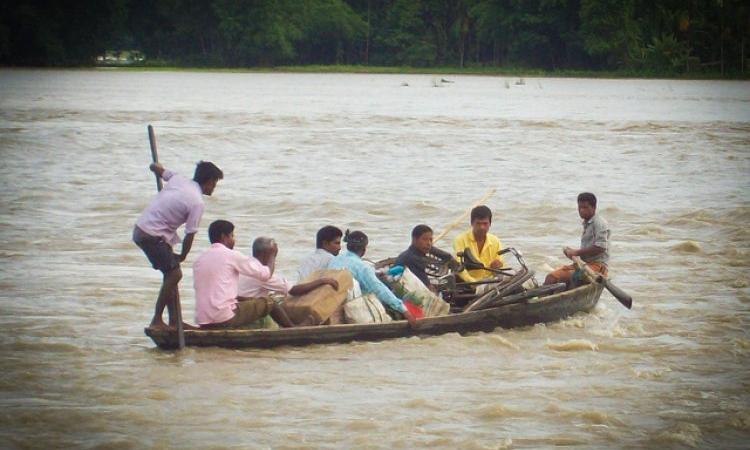
Bihar and northeast India reel under floods
As the water level of the Brahmaputra River rose above the danger level across Assam, 30 of the 33 districts in the state were deluged by floods, affecting nearly 43 lakh people and claiming 15 lives. In Bihar, incessant rains in neighbouring Nepal caused floods affecting 25 lakh people across 12 districts in the state. The death toll has risen to 24. Union minister Amit Shah has reviewed the current flood situation in different parts of the country and has directed the senior officers to extend all necessary assistance to the flood-affected states. (Times of India, India Today)
Hyderabad follows in Chennai's footsteps, stares at looming water crisis
As compared to previous years, water levels in all of Hyderabad's reservoirs have decreased by 12 feet this year. Weeks after the monsoon officially entered Telangana, there have been no fresh inflows in the drinking water sources of Hyderabad.
As of July 13th, drinking water supply for one crore people in the twin cities of Hyderabad and Secunderabad are estimated to last only till the end of August.
Moreover, in case of monsoon playing truant, the city might start facing a water crisis from second week of September and the water board will be left with no option but to enable emergency pumping at Godavari, Osman Sagar and Himayat Sagar reservoirs. (Times of India)
Tamil Nadu recorded highest sewer cleaning deaths since 1993
Since 1993, nearly 620 sewer cleaning deaths have been reported in 15 states in the country, with the highest number of cases from Tamil Nadu, followed by Gujarat and Karnataka. Other states and Union Territories where sewer deaths have been reported are Uttar Pradesh, Haryana, Rajasthan, Punjab, Delhi, West Bengal, Uttarakhand, Andhra Pradesh, Chhattisgarh, Chandigarh and Telangana. As per the government, so far full compensation has been paid in 445 cases out of 620. However, a total of 53,598 manual scavengers have been identified between 2013 and 2019 but there has not been a single conviction in any of the cases. (Times of India)
As groundwater perils, government set to study water use
The government has informed the Lok Sabha that as per a 2017 assessment, out of the total 6,881 assessment units in the country, 1,186 of them have been categorised as over-exploited in groundwater. However, to tackle the water crisis, the agriculture ministry and NITI Aayog are planning to carry out an extensive study on agricultural use of water. As agriculture is a major consumer of groundwater, the study will help farmers opt for cultivation based on water consumption levels. The study report is expected to be submitted by the end of October. (Times of India, The New Indian Express)
70 percent of all water bodies polluted in Gujarat
As per the Gujarat Pollution Control Board's annual report on the quality of water bodies in the state, only seven locations have clean water. The samples collected for the study indicate that 70 percent of all water bodies tested had slight to moderate pollution.
Moreover, some spots in the Sabarmati river in Ahmedabad showed just moderate pollution while environmentalists have been protesting the deteriorating quality of the river due to dumping of effluents.
According to the environmental activist Mahesh Pandya, the result of the report comes as a surprise as it indicates slight to moderate pollution at locations which were categorised as extremely polluted earlier by the Board. (DNA)
This is a roundup of important news published between July 10 - 16, 2019. Also read policy matters this week.